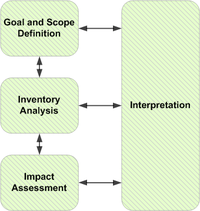
Photo from wikipedia
After 15 year development, it is still hard to find any real application of the self-optimizing control (SOC) strategy, although it can achieve optimal or near optimal operation in industrial… Click to show full abstract
After 15 year development, it is still hard to find any real application of the self-optimizing control (SOC) strategy, although it can achieve optimal or near optimal operation in industrial processes without repetitive real-time optimization. This is partially because of the misunderstanding that the SOC requires to completely reconfigure the entire control system, which is generally unacceptable for most process plants in operation, even though the current one may not be optimal. To alleviate this situation, this paper proposes a retrofit SOC methodology aiming to improve the optimality of operation without change of existing control systems. In the new retrofitted SOC systems, the controlled variables (CVs) selected are kept at constant by adjusting setpoints of existing control loops, which therefore constitutes a two-layer control architecture. CVs made from measurement combinations are determined to minimize the global average losses. A subset measurement selection problem for the global SOC is solved though a branch and bound algorithm. The standard testbed Tennessee Eastman process is studied with the proposed retrofit SOC methodology. The optimality of the new retrofit SOC architecture is validated by comparing two state of art control systems by Ricker and Larsson et al., through steady-state analysis as well as dynamic simulations.
Journal Title: IEEE Transactions on Industrial Electronics
Year Published: 2017
Link to full text (if available)
Share on Social Media: Sign Up to like & get
recommendations!